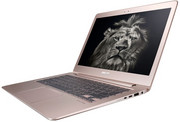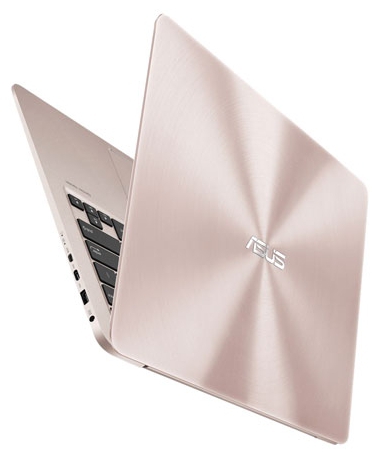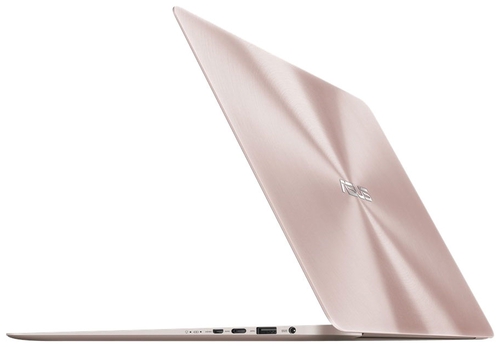Asus Zenbook UX331UAL-EG050T
Especificaciones de Portátil(es)

Price comparison
Promedio de 3 puntuaciones (de 3 análisis)
Análisis para el Asus Zenbook UX331UAL-EG050T
Origen: The Techy
 EN→ES Archive.org version
EN→ES Archive.org versionI’m impressed that ASUS came this close to perfection. Thanks to its all-magnesium design, this ultrabook is lightweight and compact – making it very useful for travel and presentations. Don’t forget this ultrabook performs well, offers good battery life and packs a great keyboard and trackpad.
Único Análisis, disponible online, corto, Fecha: 10/04/2018
Puntuación: Puntuación total: 75%
Origen: The Indian Express
 EN→ES Archive.org version
EN→ES Archive.org versionAfter using the ZenBook 13, I am sure of one thing: this laptop is an ideal choice for those who have a lot to write, like myself, and are constantly on the move. At 13.9mm thick and weighing at 1.12kg, the ZenBook 13 is also fairly powerful — which makes it a dependable machine at the end of the day. For me, the ZenBook 13 strikes a balance between the size and performance and that really matters in this post-PC era. Asus ZenBook 13 is not perfect (no laptop is), but it is still impressive for being so slim and light, while also packing enough power.
Único Análisis, disponible online, corto, Fecha: 09/16/2018
Puntuación: Puntuación total: 80%
Origen: Ljud och Bild
 SV→ES Archive.org version
SV→ES Archive.org versionÚnico Análisis, disponible online, corto, Fecha: 06/15/2018
Puntuación: Puntuación total: 83%
Comentario
Intel UHD Graphics 620:
GPU (GT2, 24 EUs) integrada encontrada en algunos modelos de CPU Kaby-Lake-Refresh (15 W, serie ULV). Técnicamente igual a la anterior GPU Kaby-Lake llamada HD Graphics 620.
Estas tarjetas también deben ser capaces de aguantar todos los juegos actuales, pero la mayoría de ellos en configuraciones de detalles medios y bajos y con bajas resoluciones. Juegos más antiguos, o menos exigentes todavía pueden ser jugados con buena calidad de gráficos.
>> Más información puede ser encontrada en nuestra comparación de tarjetas gráficas moviles y la lista de benchmarks.
i5-8250U:
Procesador quad-core de baja potencia basado en la actualización Kaby-Lake. Los cuatro núcleos tienen una velocidad entre 1.6 y 3,4 GHz (Turbo Boost) y soportan HyperThreading. La GPU integrada tiene una velocidad entre 300 y 1,100 MHz. El SoC es fabricado en un proceso FinFET de 14nm+.
>> Más información puede ser encontrada en nuestra comparación de procesadores móviles.






